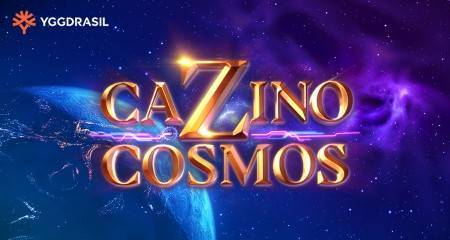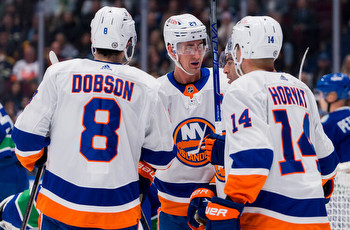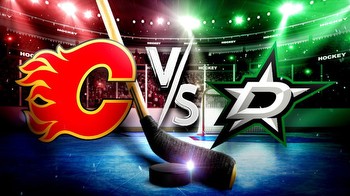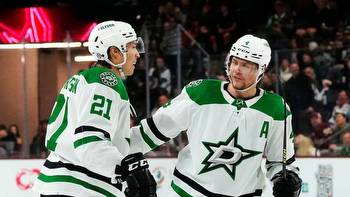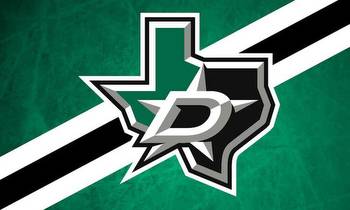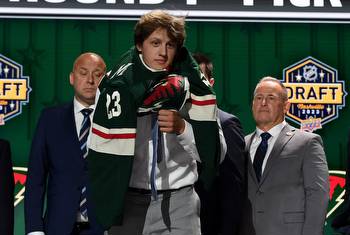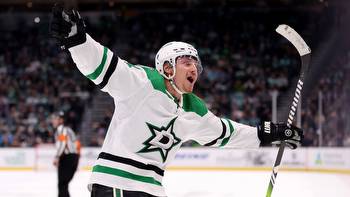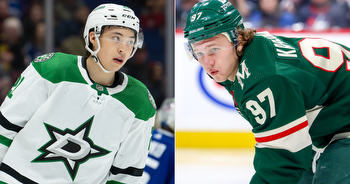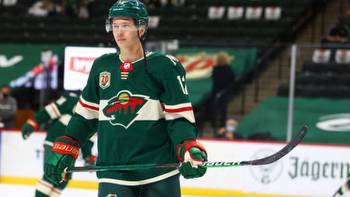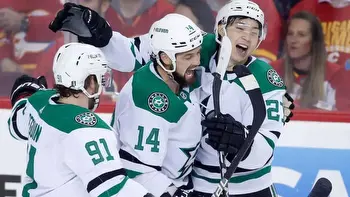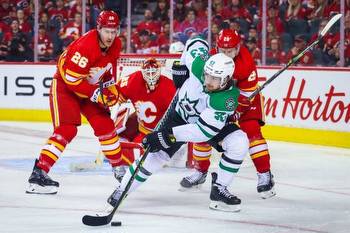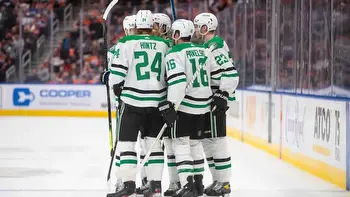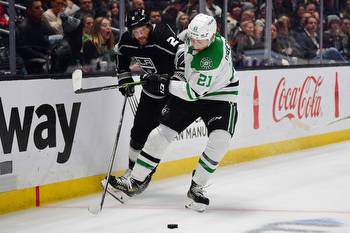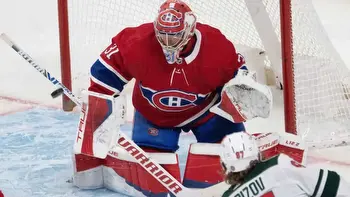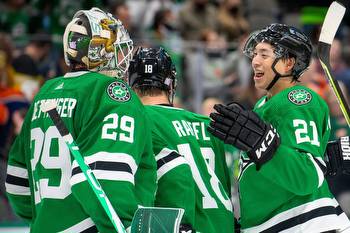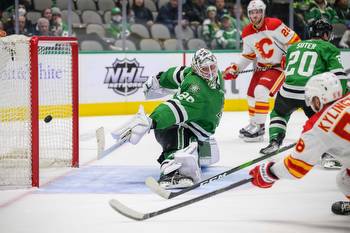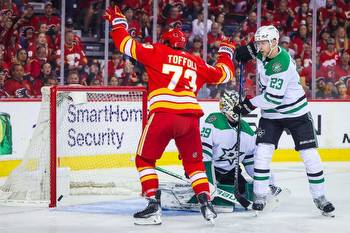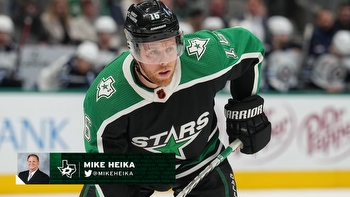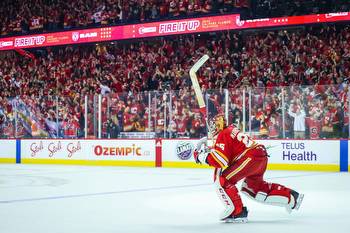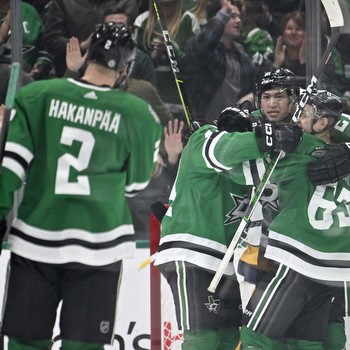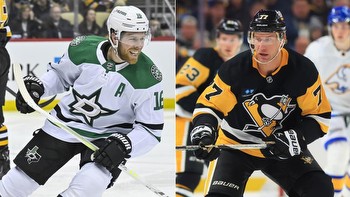What Does A Successful Path For Charlie Stramel Look Like?
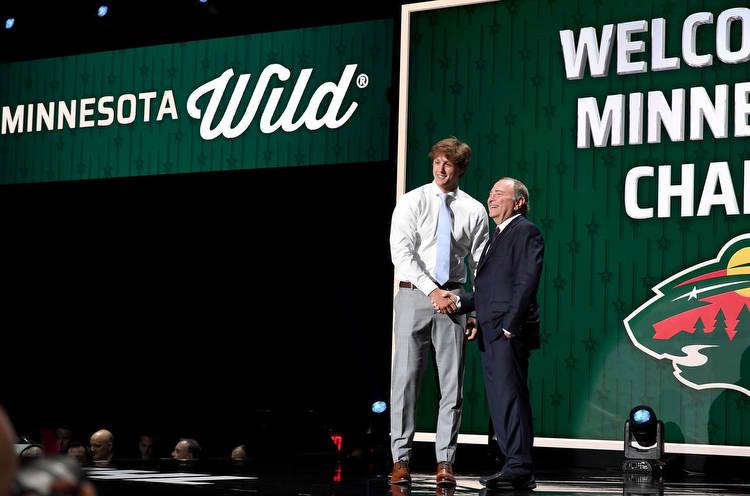
The wider narrative of the Minnesota Wild picking Charlie Stramel at 21st overall is that he was a "reach." Stramel was hardly in anyone's Top-20 pre-draft lists, so the Wild getting a late-first to early-second round graded player at that spot felt aggressive to many. Director of Amateur Scouting Judd Brackett admitted as much, saying that they had targeted the center position with that pick.
But the difference between him being a reach and a shoo-in for a top-15 pick is very subtle. It might have had entirely to do with where he played.
Had Stramel stayed in the US National Development program, he'd have played against players of his own age or younger. Beyond that, he'd be playing with the top names in his peer group. Instead, he made the jump to college hockey with the Wisconsin Badgers. The leap from juniors to NCAA competition is tough enough, but the reeling Badgers threw Stramel boat anchors, not life preservers. Stramel faced the Big Ten's top competition every night on a team whose leading goal-scorer only scored 13 goals. Instead of dominating his peers, Stramel only had five goals and 12 points.
But again, if he'd been able to improve his numbers against weaker competition, or perhaps even missed the 2022-23 season entirely, Stramel probably looks like a much better prospect than he currently is. And that's what the Wild are betting on. They didn't draft Stramel to be a third-line type of player, necessarily. That might well be his floor, but the idea is that he can put this year behind him and raise his stock to that of a top-six center.
Is that a realistic expectation, though? Jumping a level and struggling could just be a hiccup in the road to a long, fruitful NHL career. It could also mean that the struggling player was never really that good to begin with. Are there other players who've looked like Stramel and turned out great, as the Wild are hoping?
We're going to turn to Hockey Prospecting for some answers. Hockey Prospecting is a website which projects players based off their NHL Equivalency (NHLe) in their respective leagues. Currently, the model gives Stramel a 9% chance of developing into a star player (scoring 0.7-plus points per game in their NHL career). That's thanks in large part to his NHLe dropping from 22 in his draft-minus-one year to 13 in his draft year.
One just has to turn the clock back exactly 30 years to see a direct parallel to Stramel in Saku Koivu. Like Stramel, Mikko Koivu's big bro tore up junior competition as an older player in his draft-minus one season. And just like Stramel, Saku hit a wall when jumping up a level to Liiga, scoring three goals and 10 points in 46 games. In fact, Koivu went in the exact same slot Stramel did in the 1993 NHL Draft: 21st overall.
Even though Koivu didn't have a wildly successful regular season in Liiga, he stood out in other ways. He skated on the top line with future Selke Trophy winner Jere Lehtinen in the World Junior Championships that year, putting up a goal and nine points. Koivu also stepped up his game in Liiga's playoffs (something Stramel didn't have a shot at) with five points in 11 games.
Koivu built on that success over the next two years. He was fourth in Liiga with 53 points in 47 games the following season, then posted a league-leading 73 points in 1994-95. After that, he jumped to the NHL and enjoyed a long career as a clear-cut top-six center.
What would Stramel have to do to get on Koivu's trajectory? Koivu's NHLe in his draft-plus-one season was about 46 points. To match that in the NCAA, Stramel would have to score something comparable to what Jimmy Snuggerud did last year. Snuggerud scored 50 points in 40 games for the Gophers, which rates to an NHLe of around 44. Obviously, that's elite production (ranked fifth in the country) and Snuggerud did that alongside elite center prospect Logan Cooley.
It's a tall order to approximate that production. But if Stramel bounces back with this type of year, you can safely bet the Wild have hit it big. And you probably won't need to double-check with Hockey Wilderness to feel good about that projection.
You can rightly point out that Koivu developed 30 years ago, which means it might not be as relevant to today. The landscape of hockey is vastly different at the junior level. Are there more recent examples of a player with a Stramel-type draft year breaking out?
It's time to meet the Wild's most recent playoff tormenter: Roope Hintz.
Today we know Hintz as a lethal combination of size and speed for the Dallas Stars. He's coming off back-to-back 37-goal, 70-plus-point seasons. That wasn't always the case, though. Hintz didn't fall off quite as hard as Stramel did in his draft year. But he, too, went from strong production in junior hockey to regressing at the jump to Liiga. He played 42 games for Ilves, with just five goals and 17 points in 42 games. Sounds familiar?
But the big center had tools, if he could just put them together, and those tools got Dallas to pick him in the second-round in a loaded 2015 draft class. He didn't put those tools together, though. Not right away, and not really after a while. His draft-plus-one season in Liiga saw him net a respectable 20 points in 33 games, followed by 30 points (19 of them goals) in 44 games the following year. Then he made the jump to North America... but to the AHL, where he only put up 35 points in 70 games as a rookie.
When Dallas promoted Hintz four years after they drafted him, he also started slowly. In his first 118 games, he scored at a 19-goal, 38-point pace per 82 games. Not bad, but not the Hintz we know and fear today.
It wasn't until his age-24 season where Hintz started breaking out fully. In the 56-game bubble season, Hintz teamed up with Jason Robertson and Joe Pavelski, and the trio took off. Since then, Hintz has 89 goals and 190 points in 194 games. That's 38 goals and 80 points per 82 games, which is fantastic.
What's kind of interesting, particularly for Stramel, is that Hintz could be considered the "third guy" on that line. It sounds ridiculous to say for Wild fans who witnessed him torching Minnesota for five goals and 12 points in their six-game series, but it's hard to argue against.
Robertson has more goals than Hintz over the past three years (104), with Pavelski not being far behind (80). Robertson and Pavelski exceed Hintz' point total in that time (233 and 209, repsectively). And the cherry on top is that Pavelski is sixth in the NHL with 19.1 Standings Points Above Replacement (SPAR) in the past three years, while Robertson is 13th with 17.1. Hintz is "only" 16th, with 16.2.
We can carry two things forward with us concerning Stramel when it comes to Hintz' glow-up. The first is: success might not mean immediate success. There was never a point where you could look at Hintz' statistical profile and say Yeah, that dude's going to be a star. It took time for Hintz to find his footing and put his tools together. But he's smart, big, and fast, and that tends to play in the NHL.
The second thing we can take with us in Hintz' case is: If Stramel ends up a complimentary player, so what? We can argue that Hintz is that for Robertson and Pavelski, being the speedy puck-carrier to the slower but skilled net-front terrors that are that duo. It doesn't mean Hintz isn't a fantastic player, or that he can't put up crazy-good numbers. Stramel might be able to be part of a great line, even if he might not be the one 100% driving it.
But perhaps the most interesting parallel to Stramel is Mikael Backlund, the long-time Calgary Flames center.
Let's face it: The Wild might well have a Koivu or Hintz on their hands in Stramel, but that is very close to the best-case scenario. Stramel doesn't have to become that to be a great pickup at 21st overall, though. The in-house comparison to Stramel is Joel Eriksson Ek, another big center who many thought had limited upside at the time of their draft. But Eriksson Ek showed progression in his draft season, while Backlund had a draft year even tougher than Stramel's.
Koivu and Hintz made the jump from junior hockey to the highest league in their country. That wasn't the case with Backlund, who dominated junior hockey in his draft-minus-one season, only to fall on his face when promoted to Allsvenskan (Sweden's AHL, essentially) the following year. In just 18 games, Backlund scored a goal and three points. A strong showing at the Under-18 World Junior Championships (six goals, seven points in six games) convinced the Flames to draft him at 24th overall in 2007.
Like Hintz, Backlund took a quiet path to the NHL, without the massive leaps we saw from Koivu. He never tore up Swedish hockey, and he didn't take the AHL by storm. Even in the NHL, he didn't crack 30 points until he turned 24, and didn't surpass 40 until his age-26 season. He never really became a scorer at all, to be honest. He has three 20-goal seasons and just two 50-point campaigns under his belt, with a career-high 56 last season.
But ask the Flames if they'd take back the pick and choose someone else at 24th overall, and they'd probably laugh you out of the room. Backlund's spent over a decade as one of the better two-way centers in the league, fetching the Flames 2.0 SPAR or more in eight of his 12 seasons. For quite a while, he was a valid candidate in the Most Underrated Player discussion.
When we talk prospects, we like to dream about the ultimate best-case scenario. Imagining Stramel exploding into a Hintz-type player is fun, and it is in the realm of possibility. But the best-case scenario doesn't happen often, much less all the time. If we're thinking about good, but more tempered scenarios, Backlund might be a solid goal for the Wild to strive for. A two-way, top-six center that can play well with stars, and contribute all over the ice. That's a damn good player to get with your first-rounder.
Success might come fast for Stramel, and it might not. It may never even arrive at all. But we've seen through multiple players overcoming tough draft seasons is absolutely possible, and that there's more than one way for this pick to turn out to be a hit.
All NHL stats via Evolving Hockey. All prospect stats via EliteProspects.
